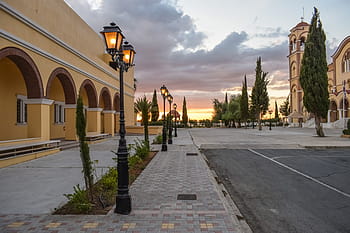Wine Tasting
페이지 정보

본문
Wine Tasting
What is the tasting process?
The tasting process in wine tasting includes several key steps that assist consider and recognize the complexities of wine. Here’s a breakdown of every stage:
1. Observation
Begin by examining the wine’s look. This consists of:
- Color: Observe the hue, which can present insight into the age and kind of the wine.
- Clarity: Look for any cloudiness or sediment.
- Viscosity: Swirl the wine and observe the legs that type on the glass; thicker legs could indicate higher alcohol content material or sweetness.
2. Swirling
Gently swirl the wine within the glass to aerate it, which boosts its aromas. This motion encourages unstable compounds to escape, enriching your sniffing experience.

3. Smelling
Bring the glass to your nose and 오피 take a deep breath. Identify completely different aromas, which might vary from fruity, floral, spicy, to earthy. Think about:
- Intensity: How strong are the aromas?
- Complexity: Are there a quantity of layers of scents?
4. Tasting
Take a small sip of the wine and let it coat your palate. Focus on:
- Flavor: What flavors do you detect? Are they just like the aromas?
- Body: Is the wine gentle, medium, 오피 or full-bodied?
- Balance: Consider the connection between acidity, sweetness, tannins (in reds), and alcohol.
- Finish: Pay consideration to the aftertaste; does it linger? What flavors remain?
5. Reflecting
Take a moment to appreciate the general expertise. Consider how the wine makes you're feeling and whether or not you would like to get pleasure from it once more. Document your impressions if you’re tasting multiple wines!
Following these steps can improve your wine-tasting experience, permitting you to understand the intricacies of different varieties and styles.
What is wine tasting session?
A wine tasting session is an organized occasion where individuals can sample and consider varied wines. It is a chance to discover completely different wine varieties, perceive their distinct flavors, and 유흥 be taught about the wine-making process.
Key Components of a Wine Tasting Session
- Selection of Wines: A variety of wines are chosen for the tasting, usually specializing in a specific region, grape variety, or style.
- Tasting Techniques: Participants are guided on how to properly style wine, which includes looking, smelling, and sipping to investigate the wine’s traits.
- Food Pairings: Some classes could embrace food pairings, enhancing the tasting expertise by demonstrating how sure foods complement particular wines.
- Expert Guidance: Typically, a sommelier or wine skilled leads the session, 오피커뮤니티 offering insights and answering questions about each wine.
Common Objectives of Wine Tasting
- To develop an appreciation for different wine styles and flavors.
- To educate individuals about wine areas, grape varieties, and manufacturing methods.
- To determine private preferences for 오피커뮤니티 wines.
- To foster social interplay among participants through a shared expertise.
Overall, a wine tasting session is each an academic and gratifying event, good for wine fanatics and novices alike.
Is wine tasting formal?
Wine tasting can range in formality depending on the setting and occasion. In some circumstances, it may be quite formal, 오피커뮤니티 taking place in upscale environments where specific protocols are adopted. This might include guided tastings led by sommeliers, with a concentrate on the wine's traits and pairing suggestions.

On the other hand, wine tasting can be an informal expertise, corresponding to at festivals, informal gatherings, or home tastings with associates. In these situations, the emphasis is often extra on enjoyment and exploration rather than strict rules.
Formal Wine Tasting
In a proper wine tasting, members may dress up, adhere to a schedule, and participate in structured evaluations of different wines. The use of particular terminology and the presence of a facilitator is frequent. Tasting notes could also be taken, and food pairings are sometimes included to enhance the experience.
Casual Wine Tasting
Conversely, casual wine tasting permits for more flexibility. Participants may merely pour and sip with none predefined construction or guidelines. Discussions could additionally be casual, focusing on private preferences and experiences rather than technical particulars.
Ultimately, whether a wine tasting is formal or casual can rely upon the context and the preferences of those involved.
- 이전글Basic Steps For Starting Your Own Online Business 25.03.25
- 다음글Ways to Access Instagram Viewers Safely 25.03.25
댓글목록
등록된 댓글이 없습니다.


